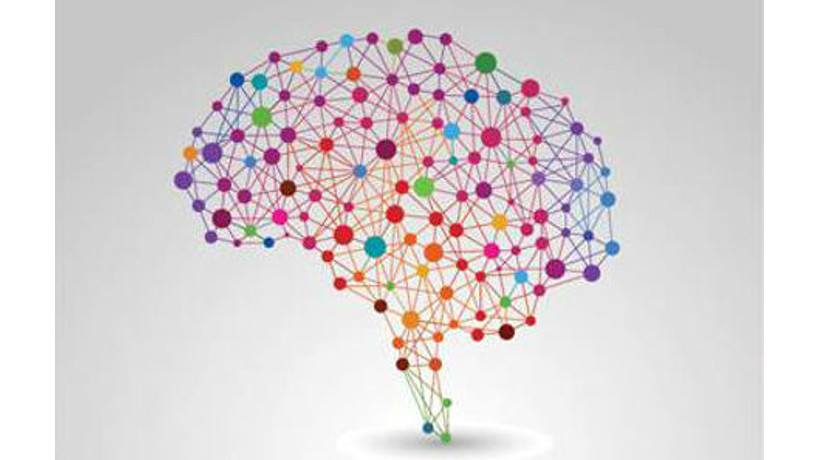Scientifically Proven Brain Facts That You Should Consider Before you Develop Your Next eLearning Course
While the content, layout, and navigability of your eLearning course are important; determining how a learner's brain actually acquires and retains information is an essential aspect of eLearning design and development. Without a firm grasp of how the brain works and the processes involved in learning new concepts, ideas, and skill sets, even the most experienced Instructional Designer will be unable to develop an effective eLearning course.
- Our brains do not have the capacity to multitask.
For years, multitasking has been considered an all-important skill. However, research has found that our brains don't actually have the power to multitask. According to a 2009 study that was conducted in Paris, the participants’ brains actually worked at half capacity when they were asked to multitask [1]. In essence, one hemisphere concentrated on one task, while the other focused on completing the secondary task.As such, it typically takes the brain twice as long to complete an assignment or task, and your error rate goes up by about 50%. This is because we aren't “multitasking” at all, but “context switching”. As such, when designing eLearning courses, it's essential to avoid eLearning modules, which ask the user to perform multiple tasks at once, as this hinders the overall learning process. - Learning that is spread out over time drastically increases knowledge retention.
A review of research studies related to learning techniques by John Dunlosky of Kent State University and a group of colleagues found that spaced learning, or distributed learning, was far more effective than studying or learning concepts in a shorter span of time [2]. The report also found that assessing one's own knowledge before an exam, through self quizzes and summaries of the core content, can improve a student's overall performance.Multiple studies have also found that microlearning can deter cognitive overload, which occurs when the brain is forced to accept an abundance of data at any given time. Therefore, designing eLearning courses, which are geared toward delivering bite size chunks of knowledge at once, such as in shorter eLearning modules, can lead to more effective online learning (Chunking Strategies). - Multimedia tools improve our brain's memory power.
It's been proven through multiple research studies and surveys that multimedia in eLearning, such as images and video, not only engage the learners but also help them to actually remember what they've learned. Research cited in a report by Michelle Chau cites a number of examples of how interactive learning tools, such as ebooks, lead to improved knowledge retention [3]. According to research, students who used ebooks that contained sound effects, music, audio narration, and images were able to retain and recite more information than those who were simply given traditional textbooks. Utilizing these ebooks also led to group collaboration and peer interaction, as the students did not have to sit quietly on their own and privately read the text. This is yet another example of how using multimedia elements can enhance an eLearning course and provide the end user with an improved educational experience. - Our brains work best at certain times of the day.
Giving learners the ability to learn anytime, anywhere with eLearning courses has its own unique set of advantages (What BYOD Means for e-Learning). One of the most significant advantages is the opportunity to tap into the power of our brains at times of peak efficiency, such as just after taking a nap or when first waking up in the morning (The Impact of Tiredness and Fatigue on Learning). A study conducted by German researchers found that quick naps could allow a learner's brain to acquire and retain information more effectively [4]. During the study two groups of participants memorized cards that contained illustrations. Then, they asked the first group to take a nap, and the second to remain awake during a 40 minute break.After the 40 minutes had passed, they had the participants memorize another set of illustrated cards. Those who took a nap during the break remembered roughly 85% of the images and patterns, while those who stayed awake only recalled 60%. It is believed that napping allows information to be moved to the brain's long-term memory storage centers, leading to improved data retention. Therefore, when creating your eLearning course, keep in mind that flexible class or module schedules will allow your students to learn more efficiently and actually retain the information you are providing. - Game play helps to exercise (and motivate) our mental muscles.
Believe it or not, playing games is actually good for your brain. Not only does it help to engage learners in the eLearning process itself, but it also serves to remedy the boredom that so often leads to unsuccessful learning experiences (Free eBook - How Gamification Reshapes Learning). A report that was released by Leicha Bragg of Deakin University details a study that was conducted in three different schools, which involved 240 students [5].According to the research, students were more motivated to learn mathematics when the information was presented in a gaming format. Even their attitude toward the subject changed, as did their confidence regarding the various concepts involved. The students were also more motivated to learn the information, which improved their overall success and alleviated the boredom that is often associated with repetition (especially relating to problem solving).Provide food-for-thought to your learners with the best Gamification LMSFind, choose and compare the top Learning Management Systems with Rich Gamification Functionality! - Our brain prefers images over text.
Adding visual elements to eLearning courses enhances knowledge retention. According to neuroscience research that is referenced in John Medina's book “Brain Rules”, participants in studies only remember about 10% of information presented orally when they are tested 72 hours after instruction [6]. However, that number jumps by about 65% when an image is added to the learning process. The basis of this idea lies in the “Pictorial Superiority Effect”, which suggests that visual input is more likely to be recognized and remembered. As such, including images and pictures in the design of courses can help to boost retention and knowledge acquisition rates.
If you are familiar with other Scientifically Proven Brain Facts that you would like to share with eLearning professionals, I highly encourage you to leave a comment along with references!
References:
- Sylvain Charron, Etienne Koechlin (2010). Divided Representation of Concurrent Goals in the Human Frontal Lobes. Science Magazine, Retrieved from http://www.sciencemag.org/content/328/5976/360.abstract
- John Dunlosky (2013). Improving Students’ Learning With Effective Learning Techniques, Promising Directions From Cognitive and Educational Psychology. Psychology Science in the Public Interest. Retrieved from http://psi.sagepub.com/content/14/1/4.abstract#aff-1
- Michelle Chau (2008). The Effects of Electronic Books Designed for Children in Education, Design of Electronic Text. University of Toronto, Retrieved from http://fdt.library.utoronto.ca/index.php/fdt/article/view/4904/1762
- Max Read (2011). Want to Memorize Something? Take a Nap. Retrieved from http://gawker.com/5741490/want-to-memorize-something-take-a-nap
- Leicha Bragg (2003). Children’s Perspectives on Mathematics and Game Playing. Deaking University, Retrieved from http://www.merga.net.au/documents/RR_bragg.pdf
- John J. Medina (2014). Brain Rules (Updated and Expanded): 12 Principles for Surviving and Thriving at Work, Home, and School. Pear Press, Retrieved from http://www.brainrules.net/about-brain-rules
Originally published on May 8, 2014









